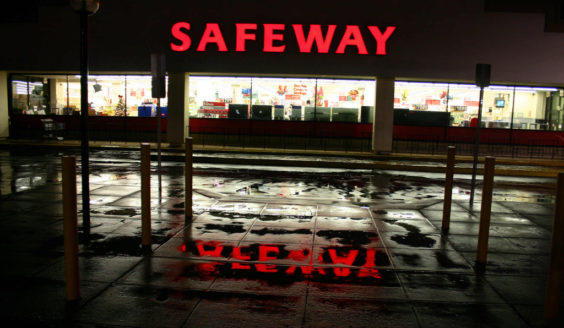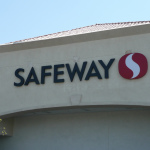
(March 6, 2014 update: Safeway announces $9 billion sale to Cerberus).
Safeway has finally confirmed one of the worst-kept secrets in the grocery industry – it’s considering offers to sell. And depending on how it all plays out, it could be good news or extremely unsettling news, for shoppers and employees at Safeway-owned stores across the country.
“Safeway Inc. today announced it is in discussions concerning a possible transaction involving the sale of the company,” Safeway said in a news release, as it unveiled its latest quarterly earnings report. “There can be no assurance that these discussions will lead to an agreement or a completed transaction,” the company went on to caution, before saying that it would have no further comment on the matter.
The statement confirms a report from last fall, in which Reuters revealed that Albertsons owner Cerberus Capital Management was among Safeway’s potential suitors. It also seems to confirm analysts’ observations that Safeway appeared to be slimming down in order to make itself more attractive to potential buyers. Last year, Safeway unloaded both its Canadian division and its Dominick’s chain in Chicago.
There had been speculation that Safeway might divest itself of other divisions, in order to eliminate weak links and focus on its strengths. But then why do it piecemeal, when they can just go ahead and sell the entire company instead?
So if you shop at Safeway, or at Safeway-owned Vons, Pavilions, Randalls or Tom Thumb – is this a good thing? It depends.
Ask shoppers of Chicago’s former Dominick’s chain if a Safeway sale was a good thing. Safeway’s exit from the market turned out to be quite the messy affair. Instead of being sold to a single buyer, Dominick’s died a slow death, as individual locations were sold one by one and transformed into any number of different stores. And some remain empty storefronts with no buyers at all.
Similarly, the sale of an entire grocery chain with such a large national footprint, could become a little messy. If Cerberus were to buy Safeway, there’s a whole lot of overlap between the two companies throughout the Western U.S., in Southern California, Arizona, Nevada, Oregon, Washington, Colorado and Texas. Cerberus, once known for buying chains only to turn around and sell them, could end up disposing of stores in markets where it already has a large presence with Albertsons.
Then again, if someone other than Cerberus swoops in, it could keep the entire Safeway chain largely intact. In addition to the much-mentioned Cerberus, Bloomberg is reporting interest from Leonard Green and CVC Capital Partners, the owners of the East Coast-based warehouse chain BJ’s Wholesale Club. Bloomberg also suggests that breaking Safeway into pieces and having different companies buy different divisions, or leaving some for Safeway to continue operating itself, is a distinct possibility.
Without knowing who, if anyone, will be the buyer, it’s far too soon to say what it will all mean for shoppers and employees. But the very fact that Safeway is publicly discussing a potential sale for the first time, shows that it’s serious about the possibility. In the end, it’s all about maximizing value for the shareholders, but at some point you can expect at least a little lip service about it being good for shoppers, too. “You do see a trend of consolidation in the grocery industry, where bigger is better… It benefits everyone, not just the companies but the consumers and more cost efficiencies, which should translate to more competitive pricing,” a Safeway spokesman said – in 1998. That’s when Safeway announced its purchase of Dominick’s.
And you see how well that turned out. Here’s hoping that any future Safeway deal will be much better for everyone – shareholders and shoppers alike.
(March 6, 2014 update: Safeway announces $9 billion sale to Cerberus).









